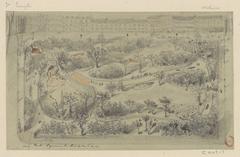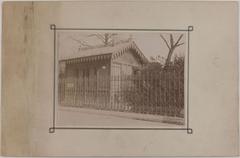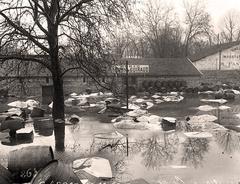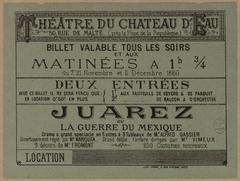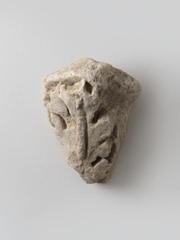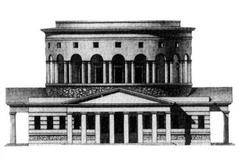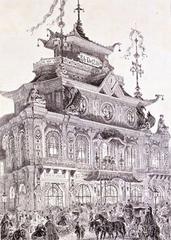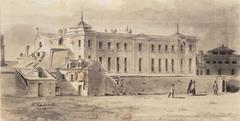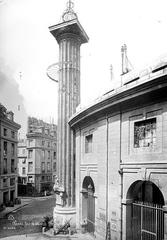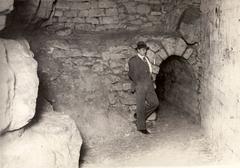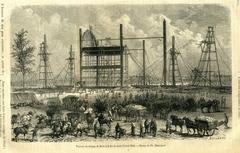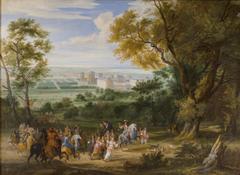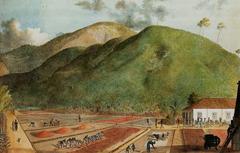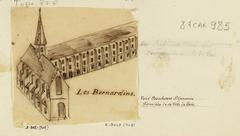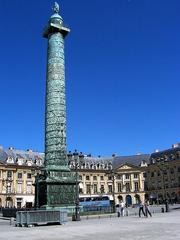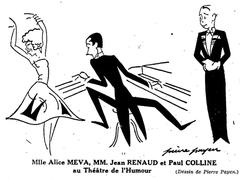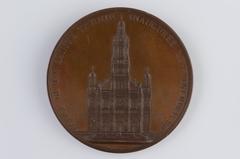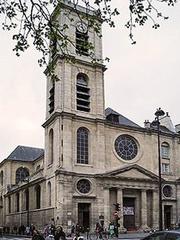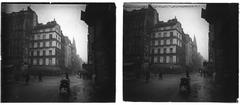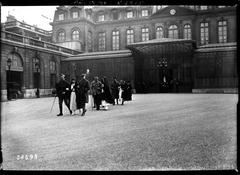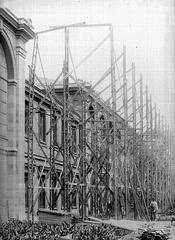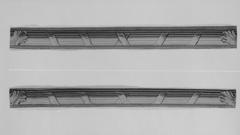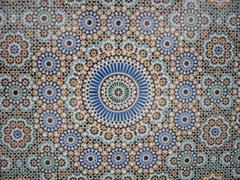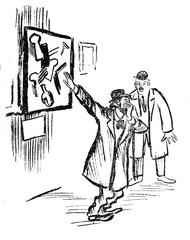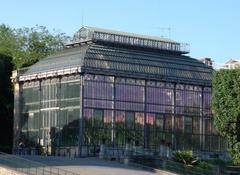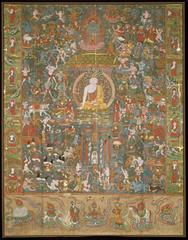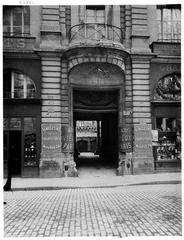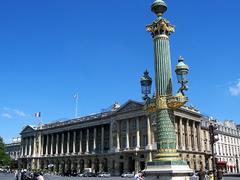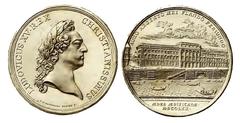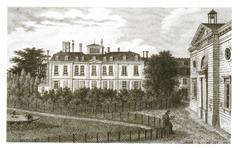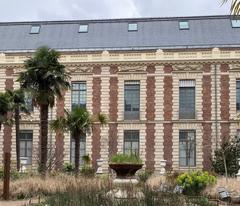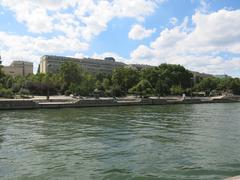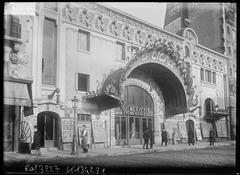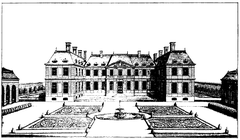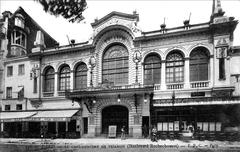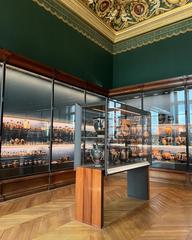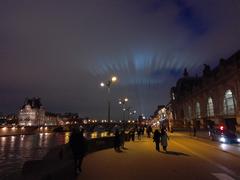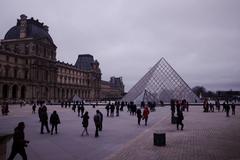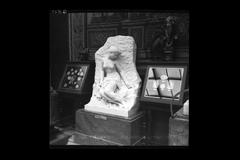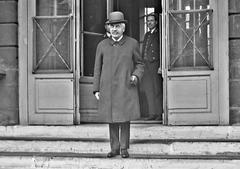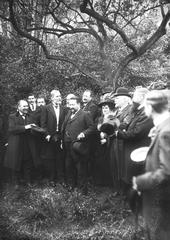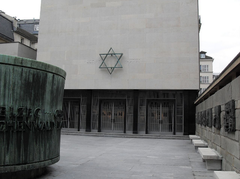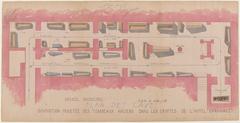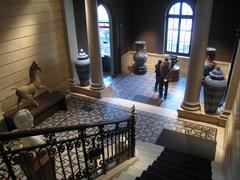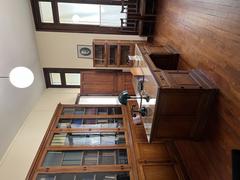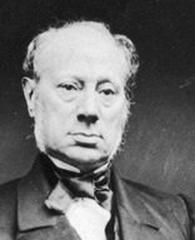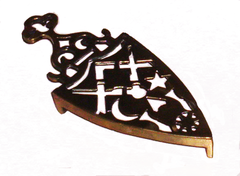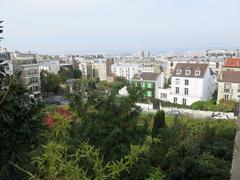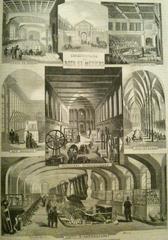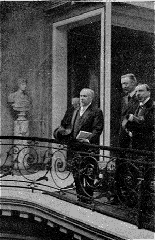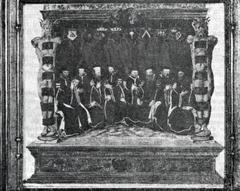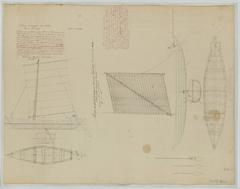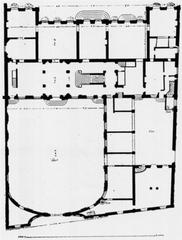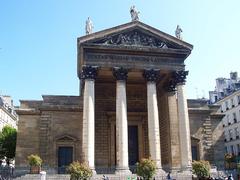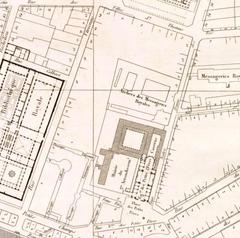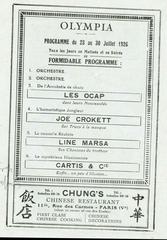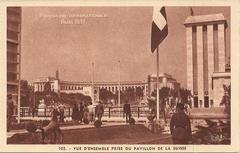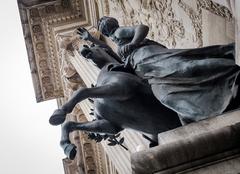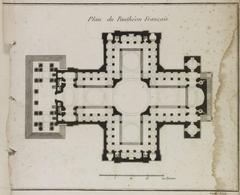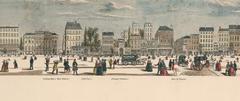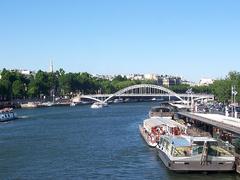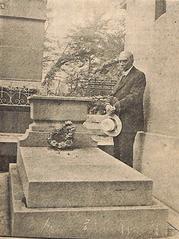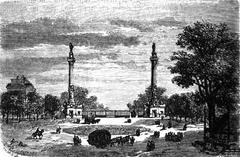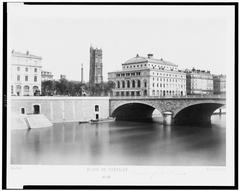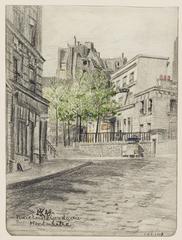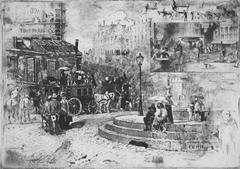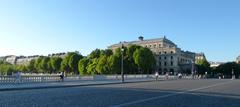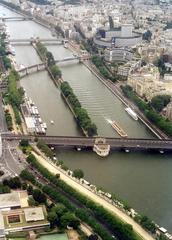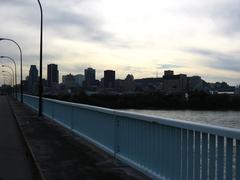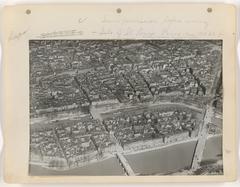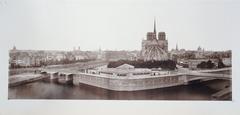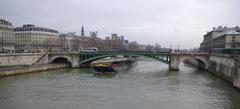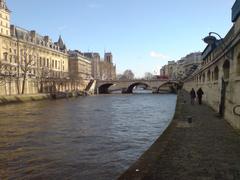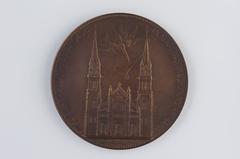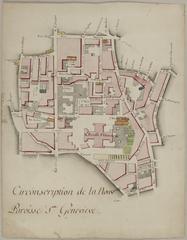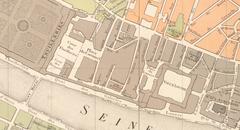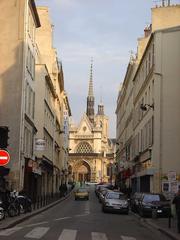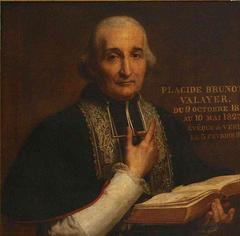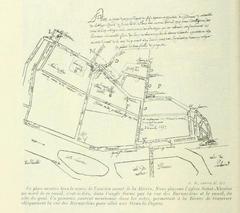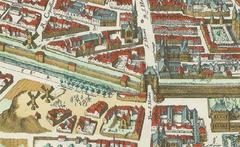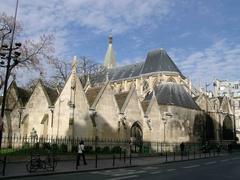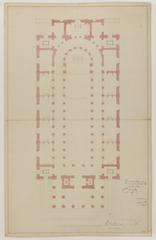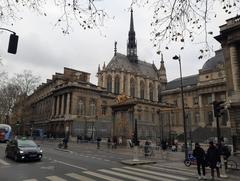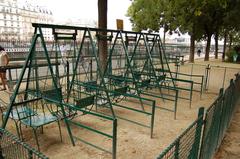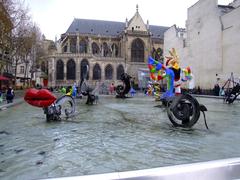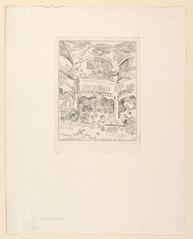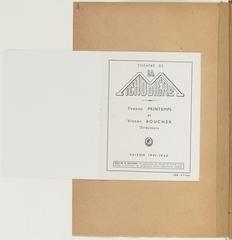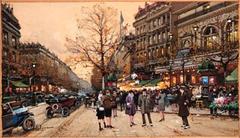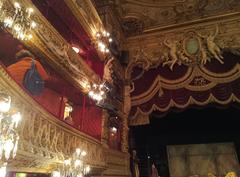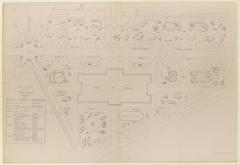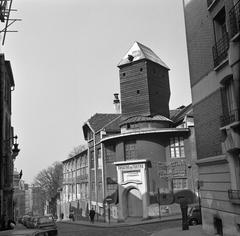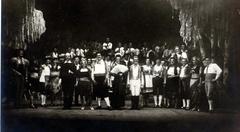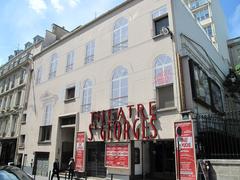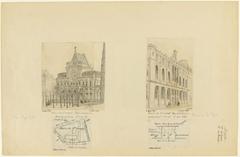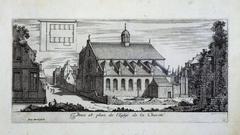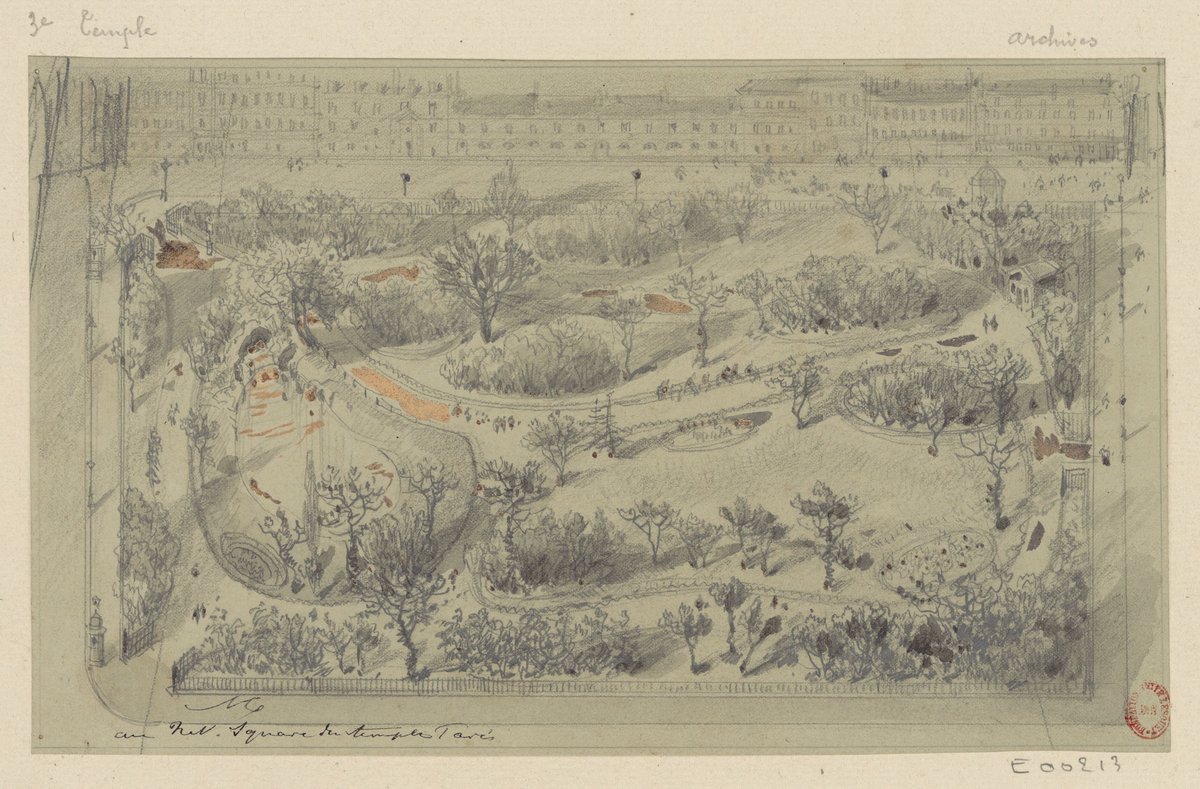
Visiting Square du Temple: Hours, Tickets, and Tips
Published Date: 18/07/2024
Introduction
Square du Temple, located in the 3rd arrondissement of Paris, is a captivating historical park that attracts visitors with its rich heritage and serene atmosphere. Originally part of the extensive estate of the Knights Templar, this park has witnessed significant transformations over the centuries, from a medieval fortress to a royal property, and finally, to a public garden inaugurated in 1857. Today, Square du Temple stands as a testament to Paris’s layered history and offers a peaceful retreat amidst the bustling Marais district. Whether you’re a history buff intrigued by its medieval origins or a nature enthusiast drawn to its lush greenery, Square du Temple promises a multifaceted experience. This guide will delve into the park’s history, notable features, visitor tips, and nearby attractions to ensure a comprehensive understanding of this unique Parisian gem.
Table of Contents
- [Introduction](#introductionintroduction)
- [History of Square du Temple](#history-of-square-du-templehistory-of-square-du-temple)
- [Origins and Medieval Beginnings](#origins-and-medieval-beginningsorigins-and-medieval-beginnings)
- [Transformation into Royal Property](#transformation-into-royal-propertytransformation-into-royal-property)
- [The French Revolution and the Temple Prison](#the-french-revolution-and-the-temple-prisonthe-french-revolution-and-the-temple-prison)
- [19th Century Redevelopment](#19th-century-redevelopment19th-century-redevelopment)
- [20th Century to Present Day](#20th-century-to-present-day20th-century-to-present-day)
- [Notable Features and Monuments](#notable-features-and-monumentsnotable-features-and-monuments)
- [Visiting Hours and Tickets](#visiting-hours-and-ticketsvisiting-hours-and-tickets)
- [Accessibility and Travel Tips](#accessibility-and-travel-tipsaccessibility-and-travel-tips)
- [Nearby Attractions](#nearby-attractionsnearby-attractions)
- [FAQ](#faqfaq)
- [Conclusion](#conclusionconclusion)
- [References](#referencesreferences)
History of Square du Temple
Origins and Medieval Beginnings
Square du Temple was originally part of the vast estate owned by the Knights Templar, a powerful and influential military order founded in the early 12th century. The Templars established their headquarters in Paris around 1140, constructing a fortified enclave known as the Temple. This complex included a church, a round tower, and various other buildings, serving as both a religious and administrative center.
The Templars’ presence in Paris was significant, as they were not only warriors but also skilled financiers and landowners. However, their fortunes changed dramatically in the early 14th century when King Philip IV of France, motivated by debt and political ambition, orchestrated their downfall. In 1307, the Templars were arrested, and their assets were seized by the crown. The order was officially disbanded by Pope Clement V in 1312.
Transformation into Royal Property
Following the dissolution of the Knights Templar, the Temple estate underwent several transformations. In the 14th century, it became a royal property, and the medieval fortress was repurposed for various uses. During the reign of King Charles V, the Temple served as a royal residence and a place of refuge during times of unrest. By the 17th century, the Temple had become a fashionable residential district, attracting wealthy Parisians and aristocrats.
The French Revolution and the Temple Prison
The French Revolution, which began in 1789, brought significant upheaval to Paris and the Temple district. The medieval fortress was converted into a prison, playing a notable role during the revolutionary period. King Louis XVI was imprisoned there with his family after the monarchy was abolished in 1792. The royal family endured harsh conditions, and their imprisonment at the Temple became a symbol of the revolution’s radical break with the past.
19th Century Redevelopment
In the 19th century, the Temple district underwent significant redevelopment as part of the broader urban transformation of Paris under Baron Haussmann. The medieval structures were demolished, and the area was redeveloped into a public square. In 1857, Square du Temple was officially inaugurated as a public park, designed in the English garden style, featuring winding paths, lush vegetation, a pond, and a waterfall.
20th Century to Present Day
Throughout the 20th century, Square du Temple continued to serve as a public park. It has been well-maintained and remains a popular destination. The park hosts various cultural and community events, contributing to the vibrant cultural life of the Marais district. Its historical legacy, combined with its contemporary role as a public space, makes it a unique and cherished part of Parisian heritage.
Notable Features and Monuments
Square du Temple is home to several notable features and monuments. One of the most prominent is the statue of the French politician and statesman Léon Gambetta, erected in 1888. Another important feature is the commemorative plaque dedicated to the victims of the Holocaust, installed in 2007, honoring the memory of the Jewish children from the 3rd arrondissement who were deported during World War II.
Visiting Hours and Tickets
Square du Temple is open daily, and admission is free, making it an accessible destination for all visitors. There is no need for tickets to enter the park.
Accessibility and Travel Tips
The park is easily accessible by public transportation, with several metro stations nearby, including Temple (Line 3) and République (Lines 3, 5, 8, 9, and 11). The park features winding paths that are suitable for strollers and wheelchairs, ensuring that all visitors can enjoy its beauty.
Nearby Attractions
The surrounding Marais district offers a wealth of attractions, including historic buildings, museums, and vibrant cafes. Visitors can explore the nearby Musée Picasso, the Archives Nationales, and the charming streets of Le Marais, known for their unique boutiques and eateries.
FAQ
Q: What are the visiting hours for Square du Temple?
A: Square du Temple is open daily, but exact hours may vary by season. It is recommended to check the official website for the most up-to-date information.
Q: Is there an entrance fee for Square du Temple?
A: No, admission to Square du Temple is free.
Q: What are the best times to visit Square du Temple?
A: The park is beautiful year-round, but spring and early summer offer the most vibrant floral displays. Early mornings or late afternoons tend to be less crowded.
Conclusion
Square du Temple is more than just a park; it is a historical landmark that encapsulates the essence of Paris’s rich past and vibrant present. From its origins as a Knights Templar fortress to its transformation into a royal residence and eventually a public garden, the park has evolved through various historical phases, each leaving an indelible mark. Today, it serves not only as a tranquil escape for locals and tourists but also as a cultural hub hosting various events and activities. Its accessibility, free admission, and proximity to other notable attractions in the Marais district make it an ideal destination for a leisurely visit. Whether you’re interested in its historical significance, architectural beauty, or natural serenity, Square du Temple has something to offer everyone. Plan your visit to this enchanting park and immerse yourself in its unique blend of history and tranquility.
References
- Discover the Rich History and Visitor Tips for Square du Temple in Paris, 2024 https://www.paris.fr/lieux/square-du-temple-elie-wiesel-1795
- Visiting Square du Temple - History, Tickets, and Top Attractions in Paris, 2024 https://en.parisinfo.com/
- A Complete Guide to Visiting Square du Temple, Paris - Hours, Tickets, and Tips, 2024 https://www.arts-et-metiers.net/
